Garmin Forerunner 245 Music review: Striking the right balance
Mục lục bài viết
Garmin Forerunner 245 Music
With the Forerunner 245 Music, Garmin struck the right balance between features and affordability. For $350, you’re getting an accurate, feature-packed device that has many of the same running features as the higher-end models.
The lack of Garmin Pay and an altimeter is annoying, but aside from those gripes, we don’t think you can go wrong with the Forerunner 245 Music.
A newer version of this device is now available. The Garmin Forerunner 255 series (and 255 Music) is now available. It adds better battery life with additional fitness modes like triathlon tracking while keeping the price approachable for most athletes. Check out our Garmin Forerunner 255
The Garmin Forerunner 255 series (and 255 Music) is now available. It adds better battery life with additional fitness modes like triathlon tracking while keeping the price approachable for most athletes. Check out our Garmin Forerunner 255 review
24 days: That’s how long ago Garmin sent me its new mid-tier running watch. That’s also how long I’ve had it on my wrist, too.
When Garmin announced its updated running watch lineup back in April, I didn’t think the standout of the bunch would be the middle-of-the-road Forerunner 245 Music. I was wrong.
It offers most of the features many look for in a GPS running watch — including onboard music support — without a gigantic price tag. Read our full Garmin Forerunner 245 Music review to learn why this might be the watch to buy.
Garmin Forerunner 245 Music
$349.99 at Amazon
Garmin Forerunner 245 Music review notes:
I’ve been using the Garmin Forerunner 245 Music as my main fitness watch for roughly three weeks, running software version 2.60. The Forerunner 245 Music has been connected to my Google Pixel 2 XL for the duration of this review.
This is a somewhat condensed review. We don’t go into details on the Garmin Connect companion app in this review, but you can learn all there is to know about it right here.
The big picture
The Garmin Forerunner 235 was one of the company’s most popular running watches of all time, but it was in need of an update. So, Garmin took a handful of features from higher-end running watches (645 Music and Fenix 5), paired them with some of the newer features introduced in the vivosmart 4, and called it the Forerunner 245 Music.
Design
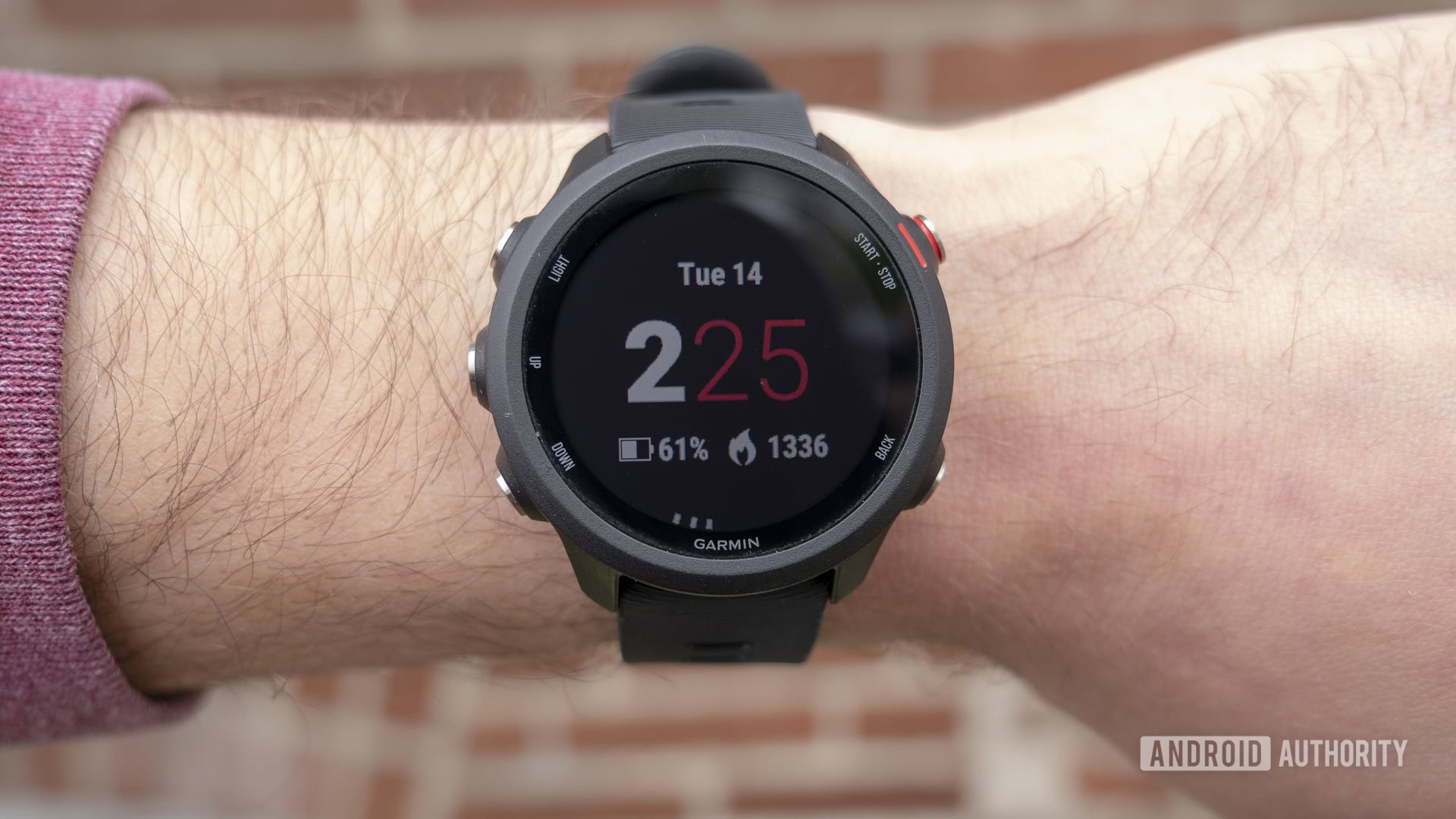
- 1.2-inch transflective memory-in-pixel (MIP) display
- 240 x 240 resolution
- Corning Gorilla Glass 3
- Case: 42.3 x 42.3 x 12.2mm
- Strap: 20mm Quick Release
- 38.5g
- Fiber-reinforced polymer case, silicone strap
- 5ATM water and dust resistance
I won’t get into too much detail on design — this is a Garmin running watch through and through. It essentially looks like all other Garmin watches in the Forerunner series. Since this is more of a budget-friendly device, the case is made of durable plastic instead of stainless steel. This allows for the watch to weigh only 38.5 grams, meaning you won’t notice it constantly when it slides around on your wrist.
It has a 1.2-inch display on the front that’s perfectly readable in direct sunlight and five physical buttons around the casing. This isn’t a touchscreen display, so all navigation around the watch takes place with the physical buttons.
A few other Forerunner 245 Music design tidbits before we move on:
- It supports 20mm Quick Release straps, so you can swap them out if you’re not satisfied with the stock silicone straps, though the ones that ship with the device are great.
- Like most other Garmin watches I’ve used, the buttons take some force to press. I usually have to grab the whole watch case to make sure the buttons register.
- It also has a 5ATM water resistance rating, so feel free to go swimming with it (down to 50 meters), or wear it in the shower.
- Garmin quotes the Forerunner 245 Music’s battery to last up to seven days in smartwatch mode or between 6-24 hours in GPS mode depending on whether or not you’re playing music. I’ve found this quote to be spot-on. Even with taking a run (with music) every other day and recording yoga every morning, I’ve achieved a solid five to six days in between charges.
Fitness and health tracking
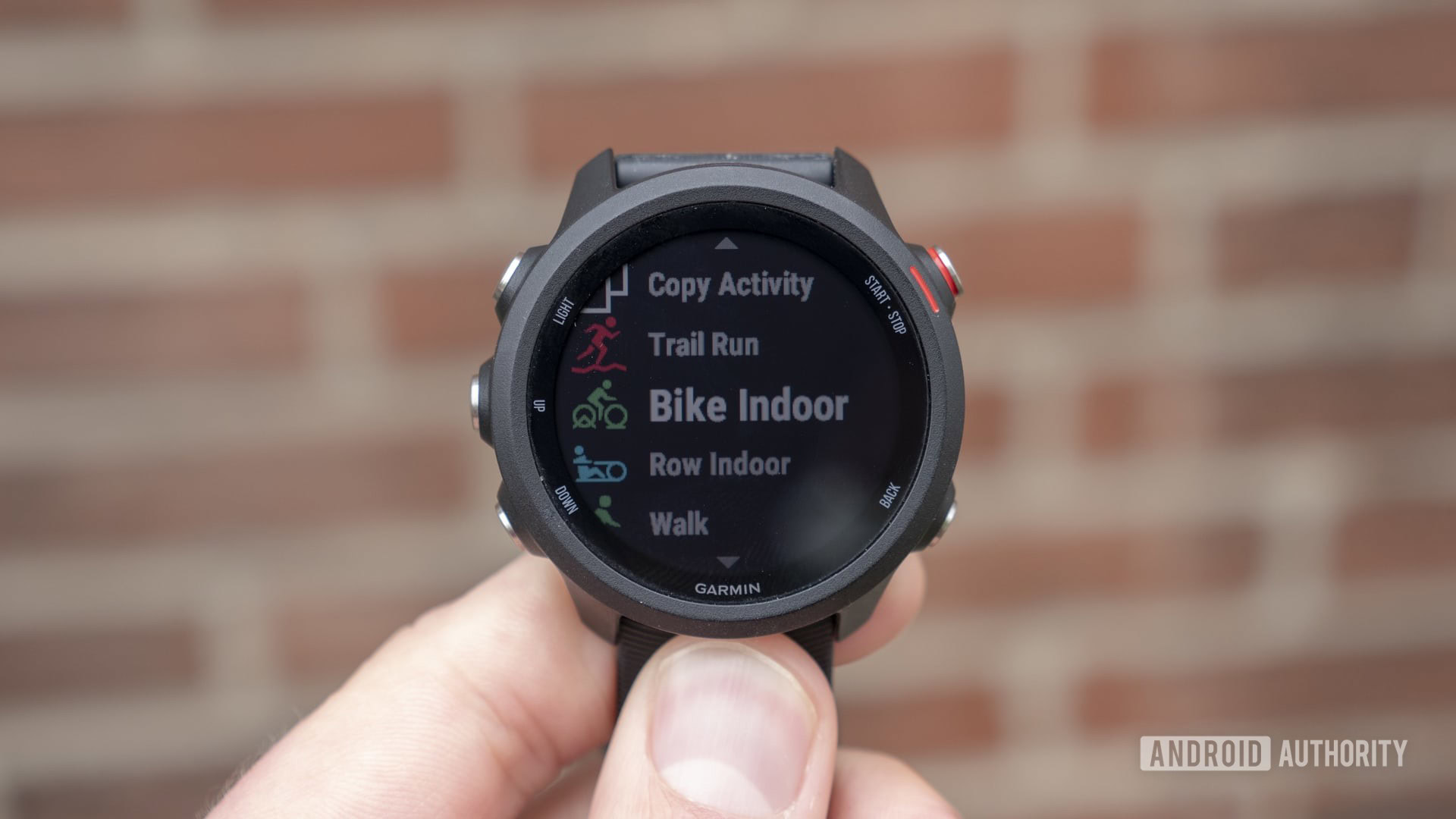
I think most people will find the Forerunner 245 Music very capable. Garmin’s naming scheme makes it easy to understand where the 245 series fits in with the rest: It’s the successor to the super-popular Forerunner 235 series and a full step down from the more expensive Forerunner 645 series. As such, the 245’s feature set fits right in line with those other devices.
Don’t miss: The best running watches | The best Garmin running watches
The watch doesn’t have more advanced features like Garmin Running Power or the stainless steel bezel of the 645 series. However, it gets a number of upgrades over the 235 series: Bluetooth Smart sensor support, pool swimming, strength workouts, Galileo, UltraTrac mode, all-day stress tracking, and more.
The biggest caveat with the Forerunner 245 series is the lack of a barometric altimeter, which means your elevation data won’t be as accurate. This is the main reason someone might want to upgrade to the 645 series, but I didn’t really find the omission to be a huge deal. Still, it’s a curious omission — even Garmin’s cheaper Vivoactive 3 series, Vivosmart 4, and Vivosport have altimeters.
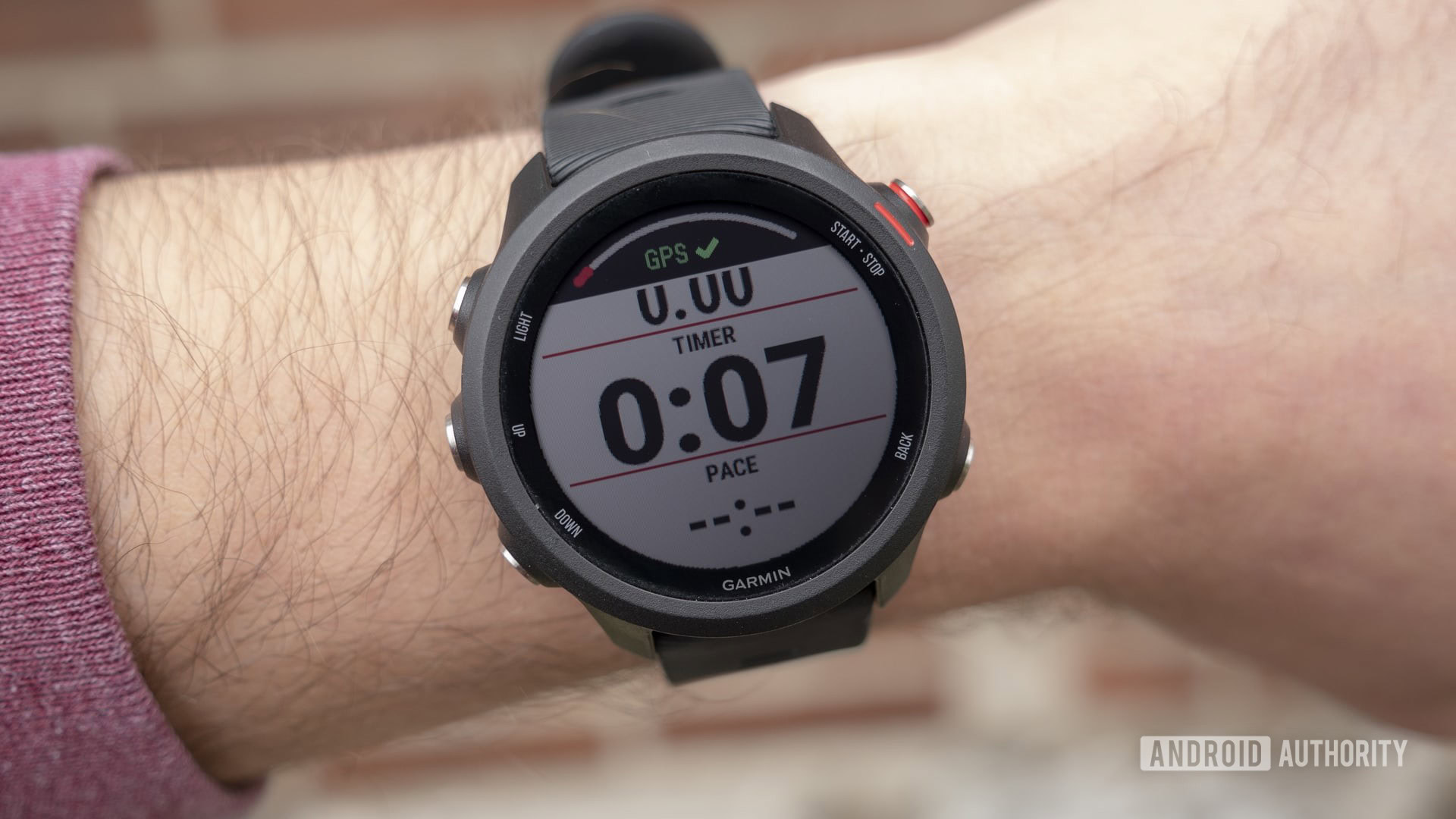
Regardless, there’s plenty here that intermediate and advanced runners will enjoy. Garmin included Running Dynamics support (I couldn’t test this as I don’t own a Running Dynamics Pod or HRM-Run/Tri), as well as Garmin Coach support. Garmin Coach gives all types of runners the tools to reach a certain goal, whether that’s a 5K, 10K, or half marathon. Personally, I started a half marathon Garmin Coach plan during my testing and I’m loving it. You get all the instructions for each run right on your watch.
See also: The best fitness trackers on the market right now
The Forerunner 245 series also gets helpful features like training status, which tells you if you’re over or undertraining; training effect, which lets you see how your workouts influence your speed and endurance; and training load, which compares your recent exercise volume to the optimal range for your training history. As a regular runner, all three of these features are super helpful. Garmin’s estimated recovery suggestions after runs are getting more accurate too.
![]()
There are a ton of other features packed into this thing, many of which I’ve already covered in other Garmin product reviews. Here are the final few features I’d like to touch on:
- Pulse oximeter: This feature came from the vivosmart 4, making the Forerunner 245 series the first Garmin watches to have it.
- The pulse ox sensor (aka SpO2 sensor) estimates your body’s blood oxygen saturation to give you an idea as to how well or poorly your body is using oxygen.
- You can turn the pulse ox sensor on for tracking during sleep, though note that this will affect battery life.
- Body Battery: This is another feature brought over from the vivosmart 4. Garmin essentially assigns a number to your body’s estimated energy levels. The number is calculated using a combination of your activity levels, stress levels, and heart rate variability.
- This can be very helpful before your workouts — if you have a particularly low Body Battery score, you might want to skip that long afternoon run.
- Menstrual tracking: Garmin has finally added menstrual tracking to Garmin Connect, allowing women to track their current cycle phase and physical and emotional symptoms. I wasn’t able to test this out, but you can read all about it right here.
- New heart rate sensor: New to the 245 series is the version 3 Garmin Elevate heart rate sensor, the same one used in the new Forerunner 945.
To see how it performs, I tested the Forerunner 245 Music’s heart rate sensor against the Fitbit Versa and Polar H10 chest strap at the same time during a 43-minute treadmill run. You can see the results below, with peak heart rate pointed out for each device.
For this comparison, let’s use the Polar H10 as the control. The Forerunner 245 Music and Polar H10 both hit peak heart rate — 183 and 182bpm, respectively — at roughly the 35-minute mark. Throughout the entire workout, both devices also continued to incrementally rise, with more stark highs and lows being recorded on the Garmin device.
Not only did the Fitbit Versa record my peak heart rate at only the 26-minute mark, it failed to consistently rise to 180 bpm after that point.
Overall, I’m impressed with the Forerunner 245 Music’s heart rate sensor. It seems as though this version 3 sensor is a step up from the Garmin Elevate sensors that came before it.
Finally, Garmin’s advanced sleep tracking metrics are here, allowing you to track your deep, light, and REM sleep stages, as well as movement and how often you wake up throughout the night. Of course, I’m sleeping when this is happening so I can’t really tell how accurate it is, but I have yet to notice any wildly inaccurate metrics in Garmin Connect. I had a particularly restless sleep one night, and Garmin Connect reflected that in the morning.
As mentioned, the pulse oximeter can kick in automatically while you’re sleeping. I still find it odd that it only tracks for a few hours during the night, instead of the whole time I’m sleeping. Garmin told Android Authority that right now, it does not currently have a setting to turn on the pulse oximeter to monitor 24/7. We will keep you updated if we hear anything different.
Since the Forerunner 245 Music has been out for a few years, Garmin has had time to introduce significant software features to the device. Recently, the 245 Music gained support for improved Body Battery algorithms, daily suggested workouts, and much more. Head here for all the details on the latest updates.
Smartwatch features
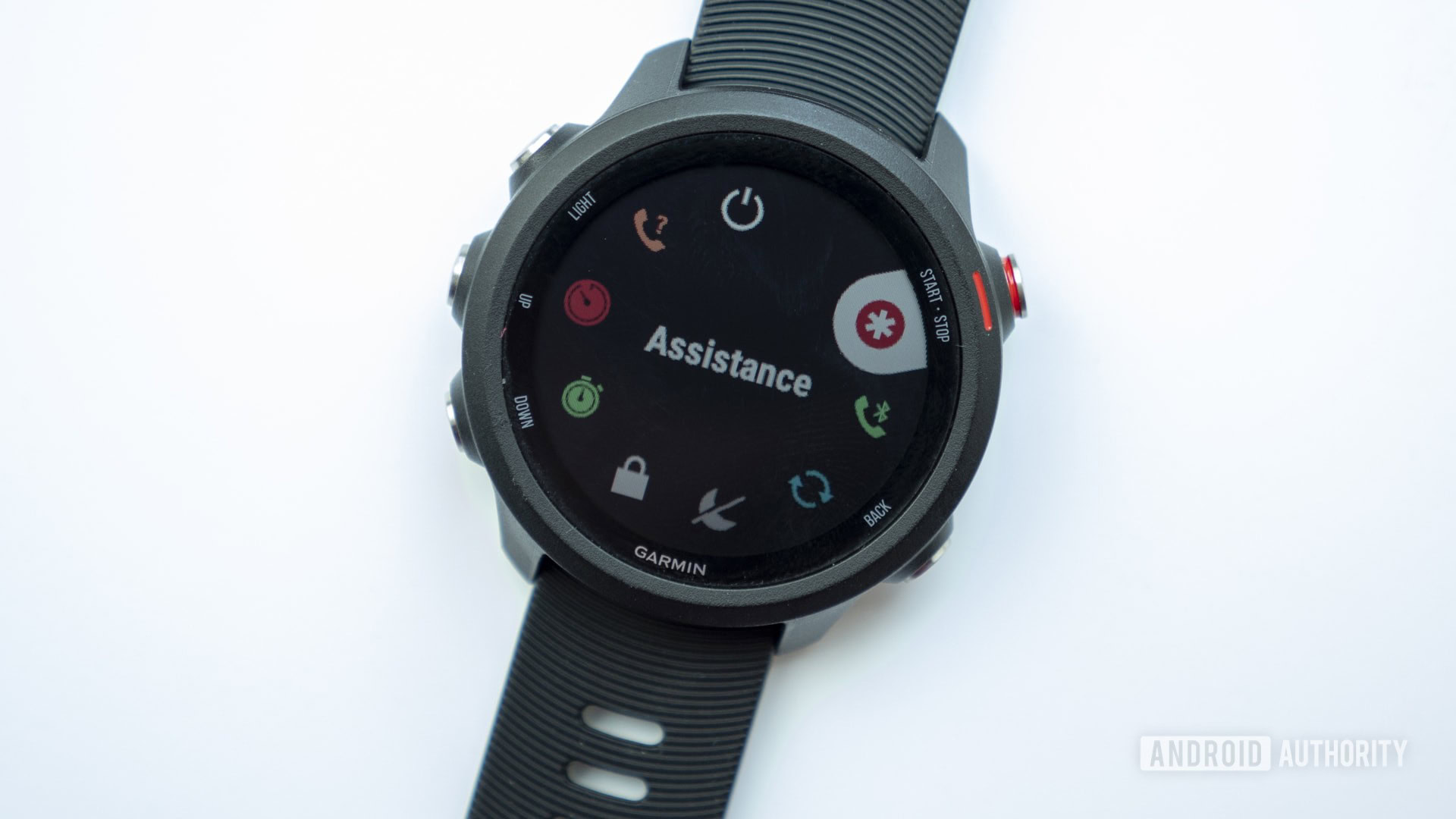
- Music storage up to 500 songs / ~3.5GB
- Smartphone notifications
- Wi-Fi support
- Incident detection and Garmin Assistance
- No Garmin Pay
As the name implies, the Forerunner 245 Music comes with onboard music storage — up to 500 songs to be exact. You can load up local music files from your computer or transfer entire playlists from streaming services like Spotify or Deezer. The music transferring process is easy — just download the Garmin Express computer app, plug in your device, and transfer your music over. It doesn’t take nearly as long to transfer as, say, the Fitbit Ionic, either. A couple hundred of my songs transferred over in only a few minutes. The 245 Music also paired with my Fitbit Flyer in just a few seconds, and Bluetooth connection between the two devices has been great.
Also read: The best workout earbuds | The best true wireless earbuds
Of course, there’s always room for improvement. Not all streaming services are supported, though most users won’t need more than Spotify — something competitors like the Fitbit Ionic and Versa smartwatches still don’t have. Specifically, the Forerunner 245 Music supports Spotify, Deezer, and Pandora.
One more gripe and I’ll move on: The only differences between this model and the standard Forerunner 245 (which is $50 cheaper) are music storage and Wi-Fi support. Getting people to spend that extra $50 just for music storage feels like a cash grab — surely it doesn’t cost Garmin that much to include extra memory.
The only other omission that may deter buyers is Garmin Pay support. It’s unfortunate users at this price point miss out on contactless payments — even the cheaper Vivoactive 3 and 3 Music have Garmin Pay support. However, Garmin has to give users some reason to upgrade to the more expensive Forerunner 645 line.
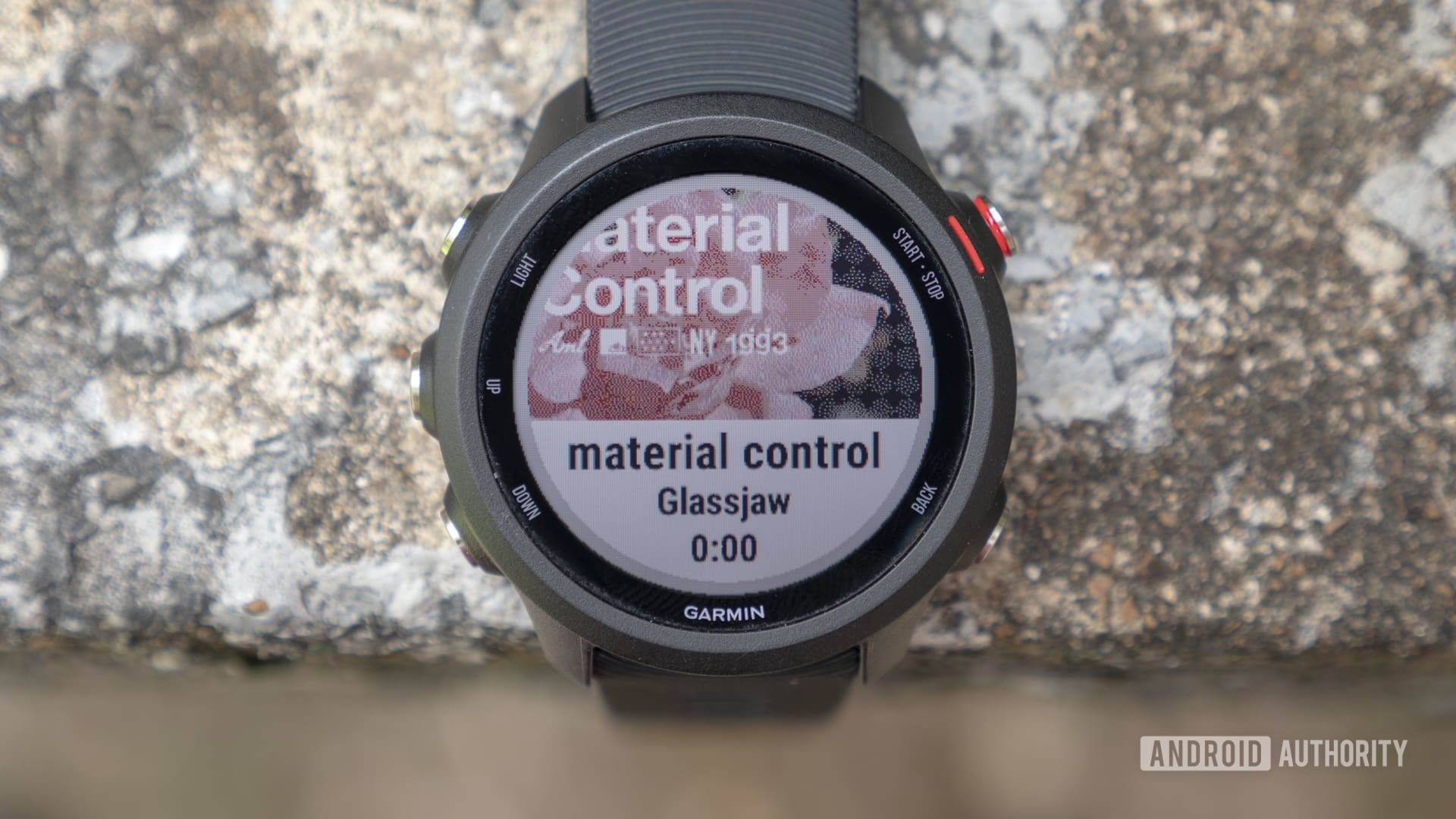
On a positive note, I love that the 245 Music comes with Garmin’s new incident detection feature. If your watch senses you may be in trouble — if you fall, for instance — the incident detection mode will automatically send your real-time location and a message to your emergency contacts. I haven’t been able to make incident detection kick in automatically, but maybe I’m not falling hard enough. There’s also a way to manually trigger this mode — called Garmin Assistance — by navigating to the app directly or holding down the top-left button.
You’ll need your phone nearby to use this feature since there’s no LTE option for the Forerunner 245 Music. Leave it at home, and the incident detection feature won’t work.
Like all other recent Garmin watches, the Forerunner 245 supports smartphone notifications and allows you to respond to SMS and answer or reject calls. It’s a smartwatch through and through, though it would’ve been nice to see Garmin Pay support here.
Garmin Forerunner 245 Music
Display
1.2-inch transflective memory-in-pixel (MIP) display
240 x 240 resolution
Corning Gorilla Glass 3
Dimensions and weight
Case: 42.3 x 42.3 x 12.2mm
Strap: 20mm Quick Release
Fits wrists with a circumference of 127-204mm
38.5g
Build materials
Case: Fiber-reinforced polymer
Strap: Silicone
Battery
Smartwatch mode: Up to 7 days
GPS mode with music: Up to 6 hours
GPS mode without music: Up to 24 hours
IP rating
5ATM
Sensors
GPS
GLONASS
Galileo
Garmin Elevate heart rate sensor
Compass
Accelerometer
Pulse ox
Connectivity
Bluetooth
ANT+
Wi-Fi
Storage
Music: Up to 500 songs
Activities: 200 hours
Compatibility
Android, iOS
Garmin Pay
No
Smartwatch features
Smartphone notifications
Text response/reject phone call with text (Android only)
Controls smartphone music
Plays and controls smartwatch music
Find my phone/find my watch
VIRB Camera Remote
Incident Detection
LiveTrack
Live event sharing (Android only)
Garmin Forerunner 245 Music review: The verdict
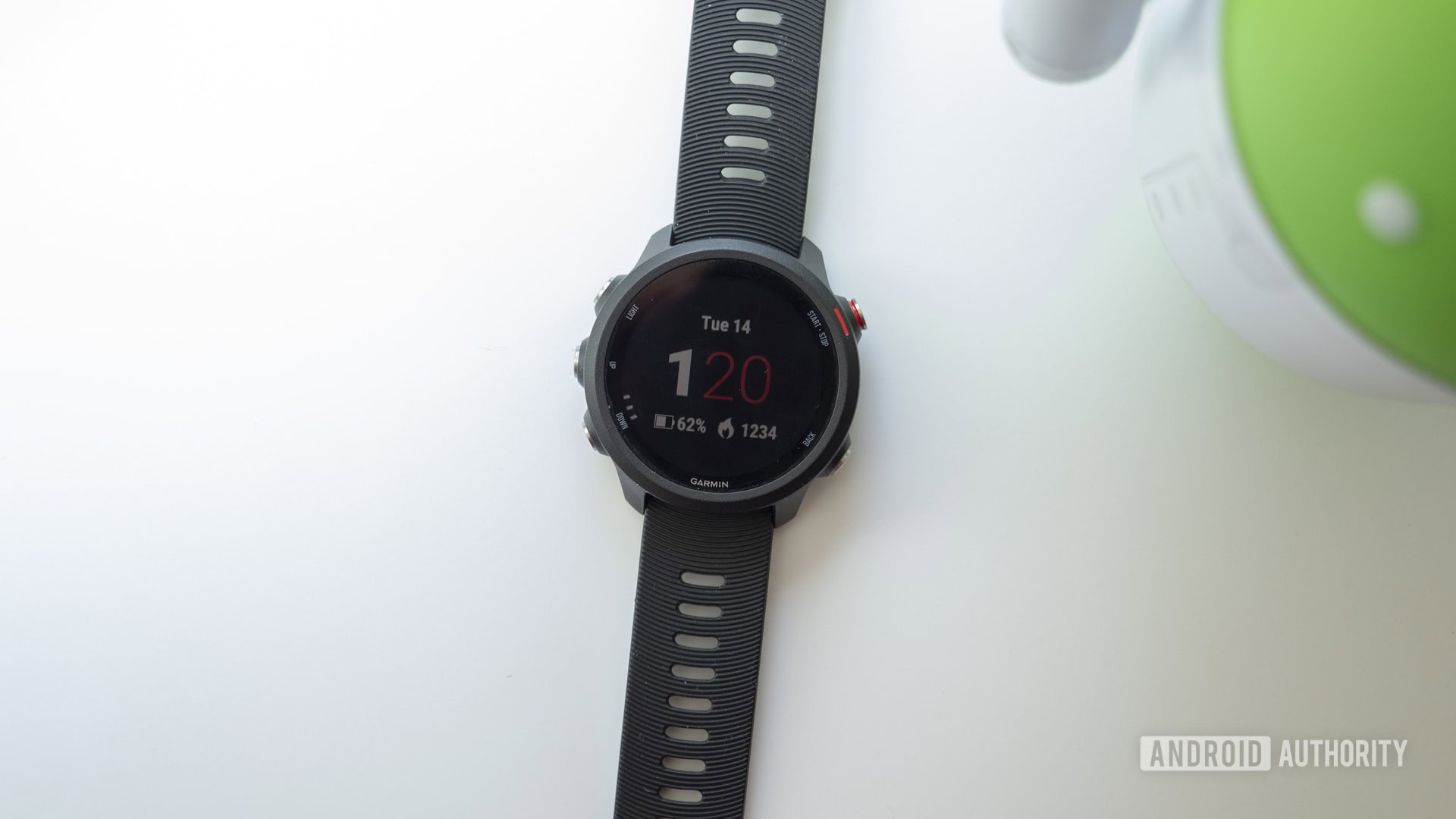
The Garmin Forerunner 245 Music is available on Amazon and Garmin.com for $349.99 in black, white, and aqua color options. There’s also a non-music variant available for $50 less.
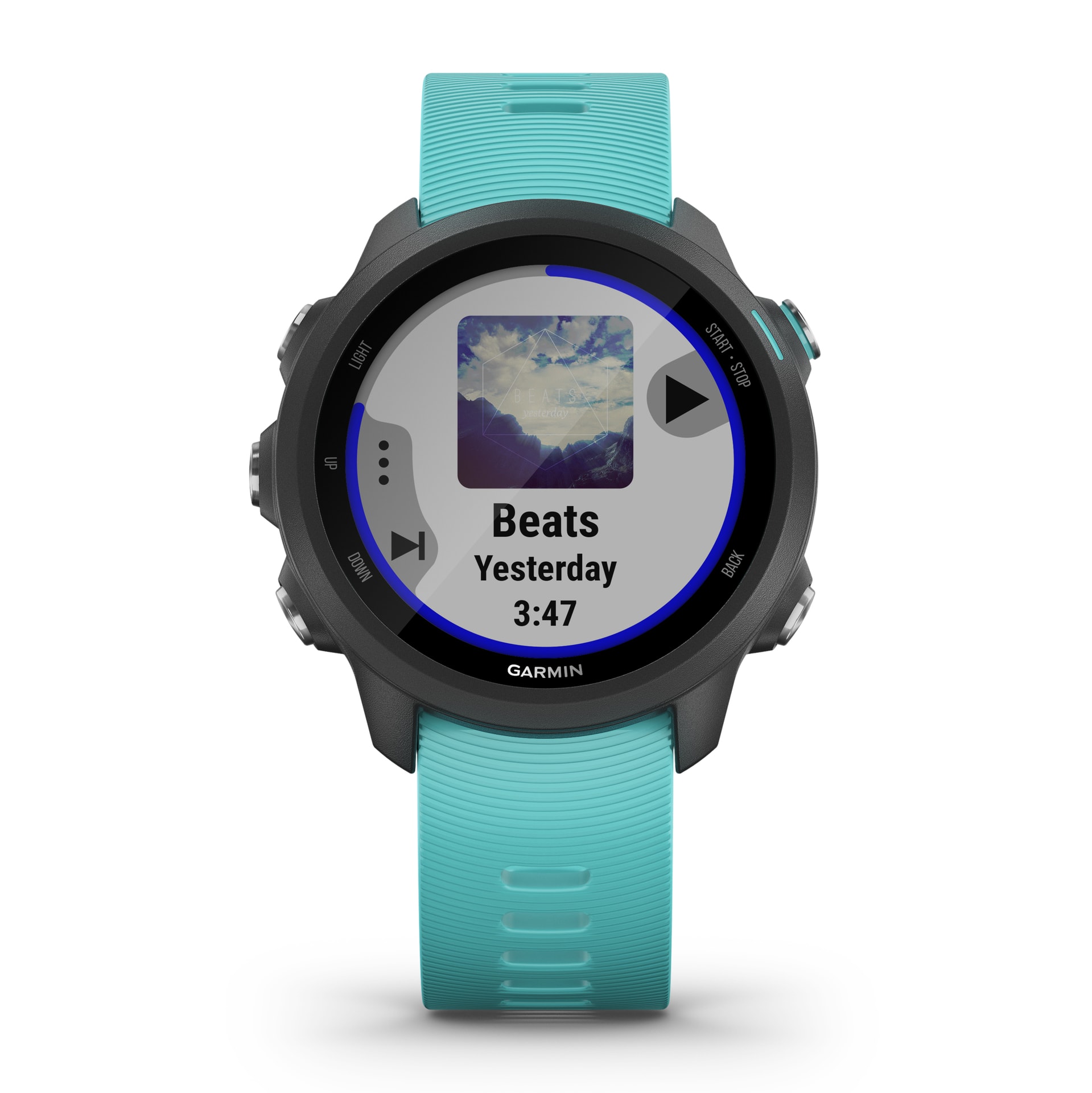
Garmin Forerunner 245 Music
Middle of the road
Hit the road with the Garmin Forerunner 245 Music. The 245 Music is Garmin’s mid-range running watch, featuring onboard music storage, Garmin Coach plans, and training status support.
$349.99 at Amazon
$349.99 at Garmin
With the Forerunner 245 Music, Garmin struck the right balance between features and affordability. For $350, you get an accurate, feature-packed device with many of the same running features as higher-end models.
The decision to remove the altimeter is puzzling, and I still don’t like that you have to pay a full $50 extra for music and Wi-Fi. The omission of Garmin Pay stings too. Those three features are important to many users, but you might find yourself looking past them, considering all the other things offered here.











